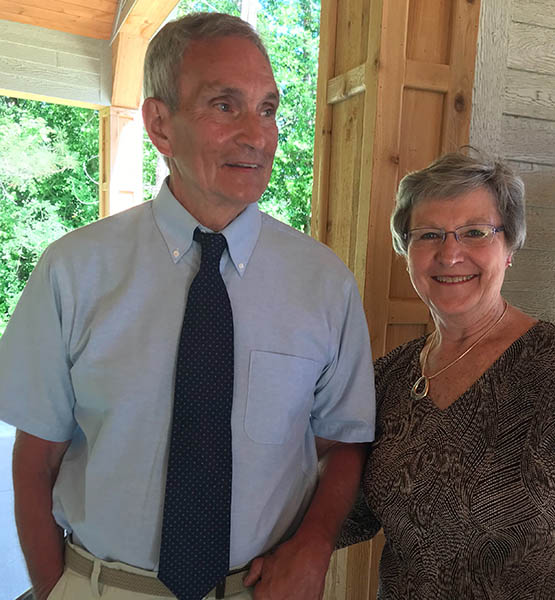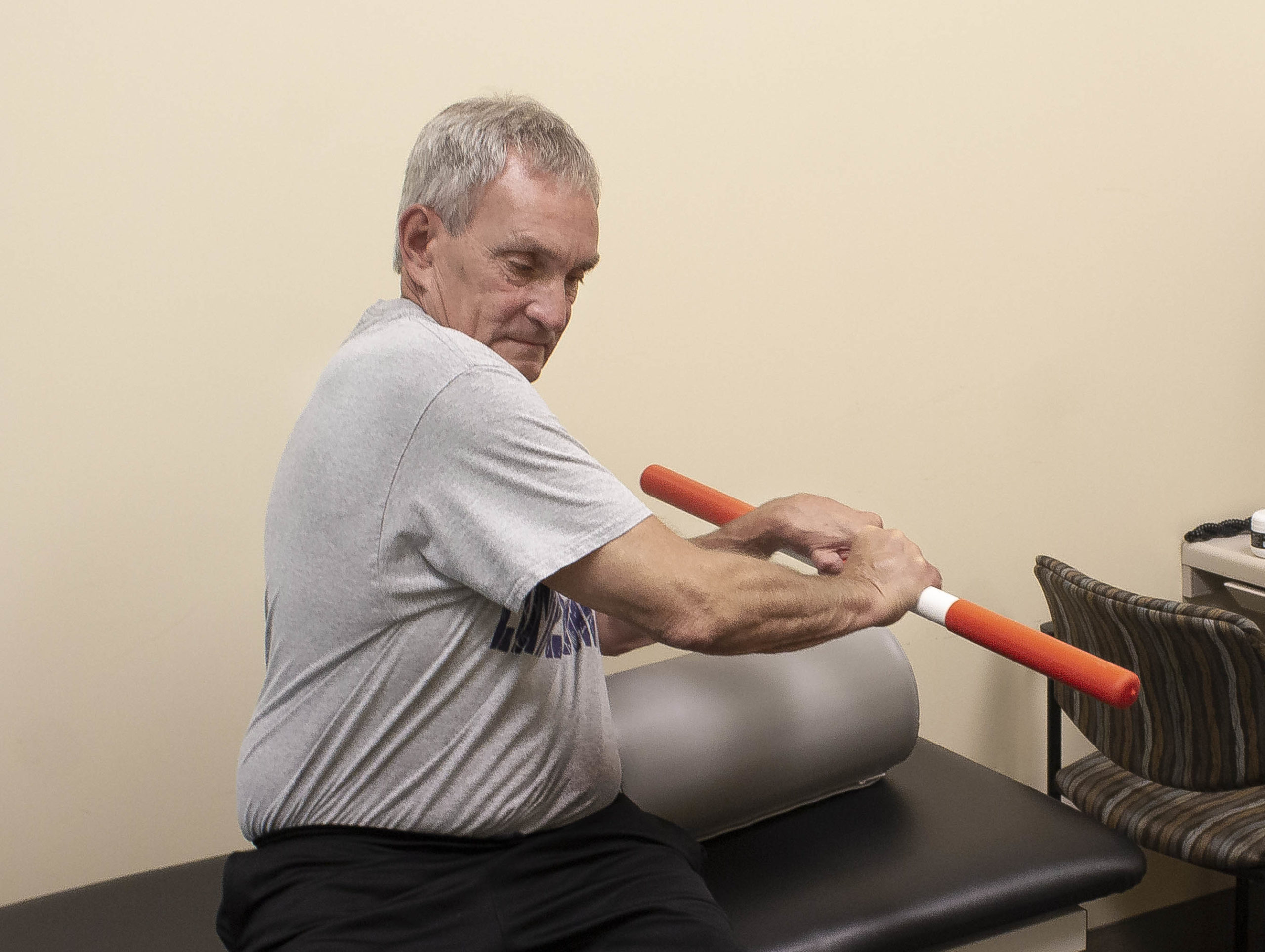Bob Bieberdorf would prefer to not have had a stroke.
He would prefer to spend time fishing, playing cards and watching grandkids’ activities rather than spending more than a month in an in-patient rehab unit.
But while he didn’t have a choice about his stroke, Bob did have a choice about the attitude and effort he put into his recovery. And that, along with his sources of support, helped him get back to doing the things he enjoys again.
“The biggest thing is a positive attitude with a good sense of humor,” he said.
‘I smiled, and away we went’
Bob woke up early on the Friday morning of Feb. 16, 2018, and realized he felt off. “What I was trying to say didn’t come out quite right,” said the resident of Bemidji, Minnesota.
He slept a little longer, then walked outside to get the newspaper. As he did, he thought it strange that his coat fell off his shoulder.
His slurred speech and drooping face caught the attention of his wife, Ardelle, who at first thought he was having a second occurrence of Bell’s palsy.
He could still walk, but Bob insisted something wasn’t right. So they decided to head to the emergency department at Sanford Bemidji Medical Center.
“They started the battery of tests,” Ardelle said. Emergency staff communicated with Sanford Medical Center Fargo, the only Advanced Comprehensive Stroke Center in North Dakota and northwest Minnesota, via Telestroke, a video conferencing system. They decided to fly him to Fargo via helicopter.
“I did not have much of a choice in the matter, so I smiled, and away we went,” Bob said.
Their son drove Ardelle to Fargo, nearly two and a half hours away, where Bob was admitted to the stroke unit. When he was ready to leave the Fargo hospital several days later, he needed to move to either a long-term care facility or an acute rehabilitation unit (ARU).
‘Concerned with me as a person’
“Thank goodness we could get into acute rehab here” at Sanford Bemidji, Ardelle said. She was invited to stay with Bob, and to come and go whenever she wished.

Photo courtesy of the Beiberdorfs
Bob, meanwhile, worked hard. He had six hours of rehab five days a week, plus rehab on Saturday mornings.
“They make you work. If you want to get better, you have to want to work,” Bob said.
He felt frustration because of how active he had been before, but he also felt encouraged by the therapists. They would joke with him, too. Sanford Health physical therapist Jeff Large would tell him: “One more time, now don’t quit. … Two more good ones. You can do it!”
Bob also felt supported in a variety of other ways. “They were really concerned with me as a person, not an object laying in bed where you get up at 8 o’clock for breakfast and 9 o’clock rehab,” he said.
They checked if he needed anything, welcomed his wife and children for visits and meals with him and searched for a suitable table when his card-playing friends visited to play games.
Staff also made sure the retired schoolteacher could keep up his routine of showering and shaving every day. “It really made a difference. It kept my spirits up,” Bob said.
Rehab — including 37 days inpatient and subsequent time as an outpatient — has made a difference in restoring many of Bob’s abilities.
“It has been very much a learning process to be patient. … How excited we can get over little steps,” Ardelle said.
Progress since stroke ‘amazing’
“We can see improvement,” she added. “When I think about what he couldn’t do when we first got to ARU, it’s amazing.”
Initially, Bob couldn’t roll over or lift his leg or arm. He has seen improvement in all of those.
He practices walking up and down their driveway eight times a day, and he lists the activities he was able to return to. “I can go to the bathroom, take a shower, take care of myself,” he said. “I can cook, and the mobility is great.”
He’s driving again, and he has even been back in a fishing boat.
Bob does have to think before he speaks, he said. “My mind is like a file cabinet. Everything is in files, and after a stroke, they are thrown around the room. The files are there; just not in order.”
But he can play cards as well as ever.
“Without the positive support of the staff, it would have been a long road,” Bob said.
But the work of rehab is worth it.
“Set goals for what you want to get out of it, and work toward that,” he advises for people who find themselves in a similar circumstance.
“Never give up.”
Bob came back to visit the ARU for seven days after he had a knee replacement. Plans for that original surgery had been sidelined by his stroke.
“Everybody said, ‘We’re so glad you’re back,’” Bob recalls.
“I’m not,” he joked back.
More stories
- Healthy 20-year-old suffers stroke due to a common condition
- Mr. History heads to front of the class again after stroke
- Strokes: 5 surprising facts about who’s at risk
…
Posted In Brain & Spine, Emergency Medicine, Neurology, Rehabilitation & Therapy
